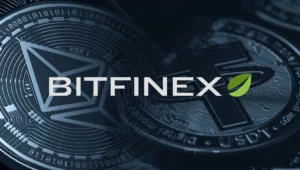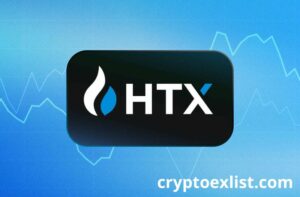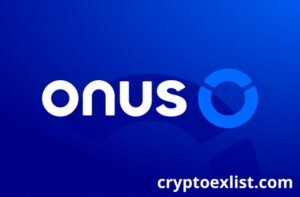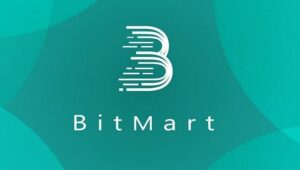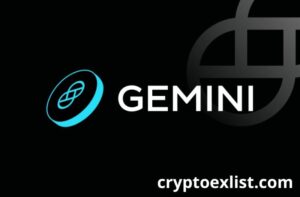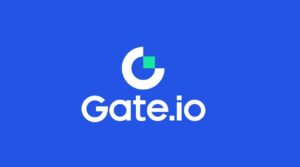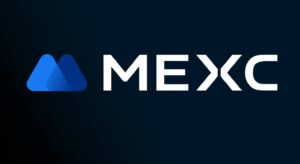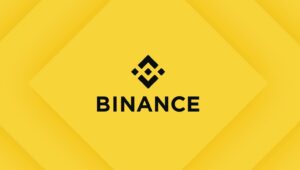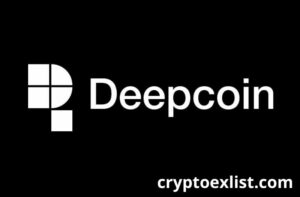
In the realm of cryptocurrency trading, it is essential to comprehend the various fees linked to exchanges in order to optimize your profits and reduce unnecessary expenses. Gate.io, one of the leading cryptocurrency exchanges, provides an extensive array of services, including trading and staking, each accompanied by its own fee structure. This article will thoroughly explore the concept of Gate.io fees, encompassing aspects such as withdrawal fees, trading fees, and listing fees. By the conclusion of this guide, you will possess a comprehensive understanding of how these fees function and their potential impact on your trading activities.
Introduction to Gate.io Fees
Gate.io fees are the various charges that users must pay when utilizing the Gate.io platform for their trading activities. These fees play a crucial role in the overall functioning and upkeep of the exchange, ensuring that it can provide users with a secure, dependable, and feature-rich environment for trading. Gate.io has established a reputation for having a competitive fee structure, which is strategically designed to appeal to both beginners who are just starting their trading journey and seasoned traders who are looking for advanced features and tools. However, to fully optimize your trading experience on Gate.io, it is essential to have a clear understanding of the different types of Gate.io fees involved and how they are calculated.
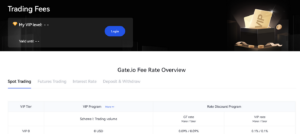
Types of Gate Fees
Gate.io employs several distinct fee structures across its various services. Below are the primary categories of Gate.io fees that you may encounter while using the platform:
- Gate.io Fees: An Overview This category encompasses the general fees associated with using the Gate.io platform. It includes a range of charges that users might face depending on their trading activities and account status. Understanding these fees is vital as they can significantly influence your overall trading costs.
- Gate.io Withdrawal Fees: What You Need to Know Withdrawal fees are charged when users decide to transfer their funds from the Gate.io platform to an external wallet or another exchange. These fees can vary based on the type of cryptocurrency being withdrawn and are important to consider, especially if you plan to frequently move your assets. Being aware of these fees can help you make more informed decisions about managing your funds.
- Gate.io Trade Fees: How They Impact Your Trades Trade fees are incurred whenever a user executes a buy or sell order on the exchange. These fees can be structured as either a percentage of the trade amount or a flat fee per transaction. Understanding how these fees work is critical, as they can directly affect your profitability and overall trading strategy. Traders should also be aware of any potential discounts or incentives that may apply based on their trading volume or loyalty status.
- Gate.io Listing Fees: The Cost of Listing New Token When new tokens wish to be listed on the Gate.io platform, there are associated listing fees that must be paid. These fees can vary widely depending on the token’s profile and the complexity of the listing process. For investors and traders, knowing about these Gate.io fees can provide insight into the platform’s operations and the types of projects that are prioritized for listing.
Gate.io Fees
Gate.io imposes a range of Gate.io fees associated with its various services, which encompass trading activities, withdrawal transactions, and the listing of new cryptocurrencies. These fees are typically considered to be competitive when compared to those charged by other prominent cryptocurrency exchanges in the market. This competitive fee structure positions Gate.io as an appealing choice for traders who are looking to minimize their costs while engaging in digital asset trading.
The fee system employed by Gate.io is designed with transparency in mind, ensuring that users can easily access comprehensive information regarding the different Gate.io fees applicable to each service. Detailed explanations and breakdowns of these fees can be found on the Gate.io website, allowing users to make informed decisions based on their trading needs and financial considerations. By providing such clarity, Gate.io aims to foster trust and confidence among its user base, enhancing the overall trading experience on the platform.
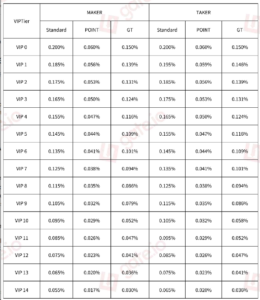
Trading Fees
Trading fees represent one of the most prevalent types of charges that users come across when utilizing the Gate.io fees platform. These fees are incurred each time a user engages in the buying or selling of cryptocurrencies on the exchange. Gate.io employs a maker-taker fee model, which is a widely adopted system among various cryptocurrency exchanges.
To elaborate further:
- Maker Fees: These are fees charged to users who provide liquidity to the market by placing limit orders that are not immediately matched with existing orders. Maker fees are generally lower than taker fees.
- Taker Fees: These are fees charged to users who remove liquidity from the market by placing market orders that are immediately matched with existing orders. Taker fees are typically higher than maker fees.
Gate.io has implemented a tiered fee structure designed to reward users based on their trading volume. This means that as users engage in more trading activities, they can benefit from progressively lower Gate.io fees. This tiered approach encourages frequent trading and helps to foster a more active trading community on the platform.
Additionally, users have the opportunity to further decrease their Gate.io fees by holding Gate.io’s native token, known as GT. By possessing GT tokens, users can unlock additional discounts on their trading fees, making it even more advantageous for them to trade on the platform. This dual incentive structure not only promotes liquidity but also enhances user engagement within the Gate.io ecosystem.
Withdrawal Fees
When you decide to move your cryptocurrencies from your Gate.io account to an external wallet, you will incur what are known as withdrawal fees. These fees are not uniform; instead, they fluctuate based on the specific cryptocurrency that you are withdrawing. Each type of cryptocurrency operates on its own blockchain, which has its own set of network fees that can affect the overall cost of the withdrawal.
Gate.io strives to minimize these Gate.io fees for its users, understanding that high fees can be a deterrent for traders and investors. However, despite their efforts to keep costs down, the fees you encounter are ultimately influenced by the prevailing network conditions of the respective blockchain associated with the cryptocurrency you are transferring. For instance, during times of high transaction volume or congestion on a particular blockchain, the network fees may increase, leading to higher withdrawal fees for users.
Listing Fees
When projects aim to have their tokens listed on the cryptocurrency exchange Gate.io, they should be aware that there are associated listing fees. These fees are not merely a formality; they encompass several critical aspects necessary for the successful introduction of a new token to the market. Specifically, these costs include thorough due diligence processes, which involve comprehensive evaluations to ensure that the project meets certain standards and regulatory requirements. Additionally, the fees cover technical integration, which is the process of ensuring that the new token can seamlessly operate within the Gate.io platform’s infrastructure. This may involve coding, testing, and other technical adjustments.
Moreover, marketing efforts are also a significant part of the Gate.io fees. Once a token is listed, it needs to be promoted effectively to attract potential investors and users. This could involve various marketing strategies, including social media campaigns, partnerships, and promotional events designed to raise awareness about the new token.
It’s important to note that the specific amount of the Gate.io fees can fluctuate significantly based on several factors, such as the nature of the project, its market potential, and the extent of support required from Gate.io. Each project is unique, and as such, the costs associated with getting listed can vary widely, reflecting the individual circumstances and needs of the project in question.
Gate.io Withdrawal Fees
Withdrawing cryptocurrency from a trading platform, such as an exchange, is an essential aspect of the overall trading process. It represents a critical phase where traders convert their digital assets into tangible value or transfer them to other wallets for various purposes. To effectively manage your investment capital and ensure that you are making the most of your trades, it is vital to have a clear understanding of the Gate.io fees associated with these withdrawals.
This comprehensive guide will delve into the specific withdrawal fee structure implemented by Gate.io, one of the prominent cryptocurrency exchanges in the market. We will explore the various elements that can impact these fees, including factors like network congestion, the type of cryptocurrency being withdrawn, and the withdrawal method chosen. Additionally, we will provide detailed strategies and tips aimed at helping you reduce these costs wherever possible, allowing you to retain more of your profits when moving your assets off the exchange. By gaining insight into these aspects, you can make more informed decisions and optimize your trading experience on Gate.io.
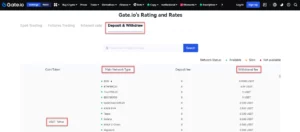
Factors Influencing Withdrawal Fees
- Blockchain Network Charges: One of the primary factors that influence the fees associated with withdrawing cryptocurrency is the Gate.io fees associated with the specific blockchain from which the funds are being withdrawn. These fees serve as a form of compensation for the miners or validators who play a crucial role in the blockchain ecosystem. Their responsibilities include processing transactions, verifying their legitimacy, and ensuring that they are securely added to the blockchain ledger. The amount charged can vary significantly depending on the current demand for transaction processing on the network, as well as the overall congestion of the blockchain at any given time. When there is high activity on the network, these fees may increase, reflecting the greater competition among users to have their transactions prioritized.
- Exchange Premium: In addition to the inherent network charges, platforms like Gate.io may also impose a small service fee or premium. This additional charge is designed to cover various operational costs that the exchange incurs while facilitating transactions. Although this premium is generally modest, it can vary based on several factors, including the type of cryptocurrency being withdrawn and the current market conditions. For instance, certain cryptocurrencies may require more resources to process due to their unique characteristics or higher volatility, leading to a slight adjustment in the Gate.io fees applied. Overall, both the blockchain network fees and the exchange service fees contribute to the total cost of withdrawing cryptocurrency, reflecting the complexities and operational realities of digital asset transactions.
How to Minimize Withdrawal Fees
When it comes to selecting the most suitable cryptocurrency for your transactions, it’s essential to recognize that not all cryptocurrencies are created equal in terms of transaction costs. Some digital currencies are associated with significantly lower network fees than others, which can help you save money when withdrawing funds. For instance, cryptocurrencies like Litecoin and Stellar are often praised for their minimal transaction fees. By opting for these specific cryptocurrencies, you can effectively minimize the overall costs Gate.io fees incurred during withdrawals.
Additionally, the timing of your withdrawals plays a crucial role in determining the fees you will face. Network congestion can fluctuate throughout the day, impacting the fees associated with transactions. When the network is experiencing high levels of activity, fees tend to rise due to increased demand for processing transactions. Conversely, if you choose to initiate your withdrawals during periods of lower congestion—when fewer users are making transactions—you may benefit from reduced fees. Therefore, keeping an eye on network activity and strategically timing your withdrawals can lead to significant savings.
Moreover, if you are using the Gate.io exchange platform, consider taking advantage of its native token, known as GT. Holding and utilizing GT may provide you with opportunities to enjoy discounts on withdrawal fees. These reductions are often contingent upon specific promotions or fee structures that the platform may have in place at any given time. By staying informed about such offers and actively using GT, you could further decrease your withdrawal costs, enhancing your overall trading experience on Gate.io.
Gate.io Trade Fees
Trade fees are one of the most critical factors to consider when engaging in cryptocurrency trading. They directly affect your overall profitability, and even small differences in fee structures can have a significant impact on your returns over time. Gate.io, one of the leading cryptocurrency exchanges, offers a competitive fee structure designed to cater to both casual traders and high-volume investors. However, to fully optimize your trading strategy, it’s essential to understand how these Gate.io fees work, how they are calculated, and how you can minimize them.
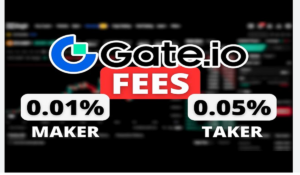
Maker-Taker Fee Model
As previously highlighted, Gate.io operates under a maker-taker fee model, which is a widely adopted structure in the cryptocurrency trading industry. This model is designed to encourage users to contribute liquidity to the market by offering more favorable Gate.io fees rates for makers—those traders who place limit orders that add liquidity to the order book—compared to takers, who are those that execute market orders and remove liquidity from the market.
To break it down further:
- Maker Fees: These fees generally fall within the range of 0.1% to 0.2%. The exact percentage you will pay depends on your overall trading activity over a specific period and whether you possess any of Gate.io’s native token, GT. The lower Gate.io fees for makers serve as an incentive for traders to place limit orders, thereby enhancing the overall liquidity of the exchange.
- Taker Fees: In contrast, taker fees usually range from 0.2% to 0.3%. Similar to maker fees, the specific rate you encounter will vary based on your trading volume and your holdings of GT. Taker fees are slightly higher because these transactions tend to reduce the available liquidity in the market.
Tiered Fee Structure
Gate.io has implemented a tiered fee structure that rewards traders based on their trading volume. Essentially, this means that as you engage in more trading activities, your Gate.io fees will decrease. This system is particularly beneficial for high-volume traders, as it allows them to save significantly on transaction costs, making it more economical for them to conduct trades on the platform. By encouraging increased trading activity, Gate.io aims to foster a vibrant and active trading environment.
Discounts with GT
Additionally, holding Gate.io’s proprietary token, GT, can lead to further reductions in Gate.io fees. The principle behind this is straightforward: the more GT tokens you hold, the larger the discount you can receive on your trading fees. This strategy is commonly employed by various exchanges to motivate users not only to hold their native tokens but also to utilize them actively within the platform. Such incentives can enhance user engagement and loyalty while simultaneously promoting the value of the native token itself. Overall, this fee structure and the associated discounts create a compelling reason for traders to participate actively in the Gate.io ecosystem.
Gate.io Listing Fees: The Cost of Listing New Tokens
For cryptocurrency projects that are aiming to have their tokens listed on Gate.io, it is essential to have a comprehensive understanding of the associated Gate.io fees. These fees are not merely a formality; they play a significant role in covering various important aspects of the listing process. Specifically, the fees account for the thorough due diligence that Gate.io conducts to ensure that the token meets all necessary regulatory and security standards. This process involves an in-depth evaluation of the project’s background, its team, and the technology behind the token.
Additionally, the Gate.io fees also encompass the technical integration required to facilitate the trading of the new token on the platform. This includes the development work needed to ensure that the token can be seamlessly added to Gate.io’s existing infrastructure, allowing users to buy, sell, and trade the token without any issues.
Moreover, these fees contribute to the marketing initiatives that Gate.io undertakes to promote the newly listed token. Effective marketing is vital for generating interest and attracting potential investors, which can significantly impact the token’s initial performance in the market. Therefore, understanding these Gate.io fees is not just about the financial aspect; it is about recognizing the broader implications and efforts involved in successfully launching a token on a prominent exchange like Gate.io.

Factors Influencing Listing Fees
When it comes to the costs associated with listing a project on a platform like Gate.io, several factors come into play that can significantly affect the overall Gate.io fees.
- Project Size and Scope: The dimensions and complexity of a project are critical determinants of the listing fees. Generally, larger projects that encompass a wide array of features and requirements tend to attract higher Gate.io fees. This is because extensive projects often require more resources for evaluation, due diligence, and ongoing support. For instance, if a project involves multiple functionalities, integrations, or a vast user base, the platform may need to allocate additional time and effort to ensure everything is in order before the official listing. Consequently, this increased workload can lead to elevated costs.
- Level of Support Required: Another important aspect influencing Gate.io fees is the degree of assistance that the project demands from Gate.io. Projects that necessitate substantial backing—such as comprehensive marketing strategies, technical integration support, or ongoing advisory services—are likely to incur higher fees. The rationale behind this is that the more support a project needs, the more resources and expertise the platform must dedicate to facilitate its success. For example, if a project requires tailored marketing campaigns to enhance visibility or specialized technical guidance to ensure seamless integration with the exchange’s infrastructure, these additional services will contribute to the overall cost of listing.
- Market Conditions: Lastly, the prevailing market conditions play a significant role in determining Gate.io fees. In times of heightened competition within the cryptocurrency landscape, platforms may adjust their pricing structures accordingly. When there are numerous projects vying for attention and space on exchanges, the demand for listings can drive up fees. Conversely, during periods of lower activity or less competition, listing fees might be more manageable. Thus, understanding the current state of the market is essential for projects looking to navigate the financial implications of getting listed on platforms like Gate.io.
Benefits of Listing on Gate.io
Even though there are certain expenses associated with getting listed on Gate.io, the advantages it offers for cryptocurrency projects can be quite substantial. Gate.io stands out as one of the largest and most well-respected cryptocurrency exchanges globally, which means that projects listed on this platform gain exposure to a wide audience of potential investors and traders. The exchange boasts a significant trading volume, which can enhance liquidity for the listed cryptocurrencies, making it easier for users to buy and sell without facing major price fluctuations.
Moreover, Gate.io is known for its strong security protocols, ensuring that both the assets of the projects and the funds of the users are well protected against potential threats. This level of security fosters trust among users, encouraging them to engage more actively in trading activities. Additionally, the platform features an intuitive and user-friendly interface, which simplifies the trading process for newcomers and experienced traders alike. This accessibility can lead to increased participation from a diverse range of users, further benefiting the projects listed on the exchange.
While the costs of listing on Gate.io fees may be a consideration for cryptocurrency projects, the potential for increased visibility, enhanced liquidity, robust security, and an easy-to-navigate trading environment makes it a compelling choice for many in the crypto space.
Conclusion
Understanding the fee structure of Gate.io fees is a vital step toward maximizing your profitability in the cryptocurrency market. From Gate.io trade fees and withdrawal fees to listing fees, each cost plays a significant role in shaping your trading experience. By leveraging Gate.io’s competitive fee model, including the maker-taker system, tiered pricing, and GT token discounts, you can minimize expenses and enhance your returns. Whether you’re a casual trader, a high-volume investor, or a project seeking to list a token, Gate.io offers a transparent and cost-effective platform tailored to your needs. Stay informed, strategize wisely, and make the most of Gate.io’s features to navigate the crypto landscape with confidence and efficiency.






